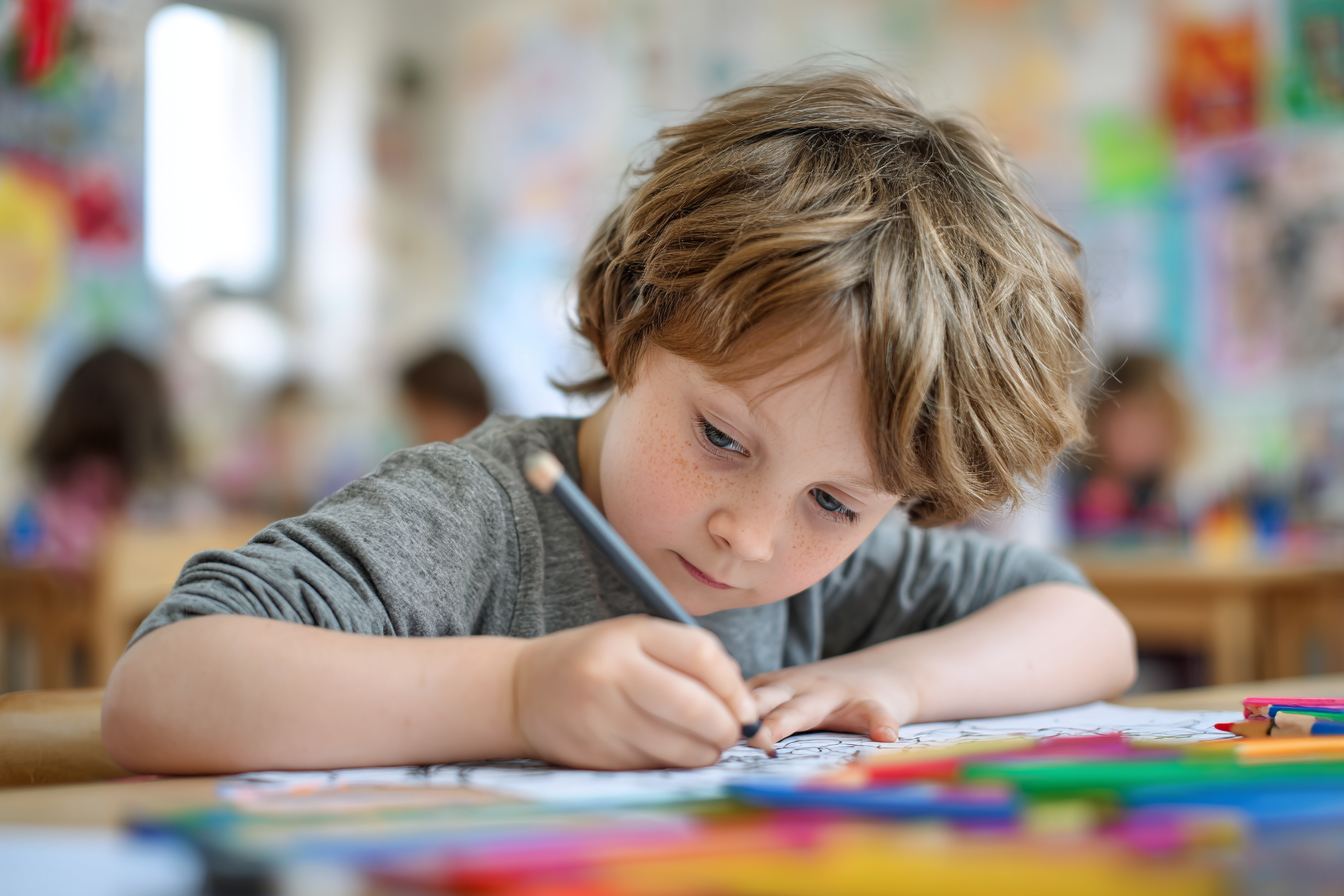Unit Plan 4 (Grade K Math): Shapes Around Us
Identify 2D and 3D shapes in the environment—circle, square, triangle, cube, sphere—and use position words (above, below, beside, in front of, behind, next to) to describe where objects are.

Focus: Name basic 2D/3D shapes in the environment and describe location using position words (above, below, beside, in front of, behind, next to).
Grade Level: K
Subject Area: Mathematics (Geometry)
Total Unit Duration: 5 sessions (one week), 30–40 minutes per session
I. Introduction
Students look for shapes in the classroom and school, learning to name 2D (flat) and 3D (solid) shapes regardless of size or orientation. They also use position words to tell where objects are (e.g., “The cube is behind the book.”). Emphasis is on noticing, naming, and explaining.
Essential Questions
- How can I recognize a shape even when it’s turned or a different size?
- Which position words help me tell where something is?
- How do I know if a shape is flat (2D) or solid (3D)?
II. Objectives and Standards
Learning Objectives — Students will be able to:
- Name common 2D shapes (circle, triangle, square, rectangle, hexagon) in the environment, no matter the orientation/size.
- Identify common 3D shapes (cube, cone, cylinder, sphere) and tell that they are solids.
- Describe positions of objects using above, below, beside, in front of, behind, next to.
- Draw/trace/build simple shapes and explain how they know their names/positions.
Standards Alignment — CCSS Kindergarten (threaded across the unit)
- K.G.1: Describe objects in the environment using names of shapes; describe the relative positions of these objects using position words.
- K.G.2: Correctly name shapes regardless of their orientations or sizes.
- K.G.3: Identify shapes as two-dimensional (flat) or three-dimensional (solid).
- Mathematical Practices: MP.6 (precision), MP.3 (explain/justify), MP.5 (use tools) threaded.
Success Criteria — Student Language
- I can name shapes I see around me, even when they are turned.
- I can tell if a shape is flat (2D) or solid (3D) and name it.
- I can use position words to describe where an object is.
